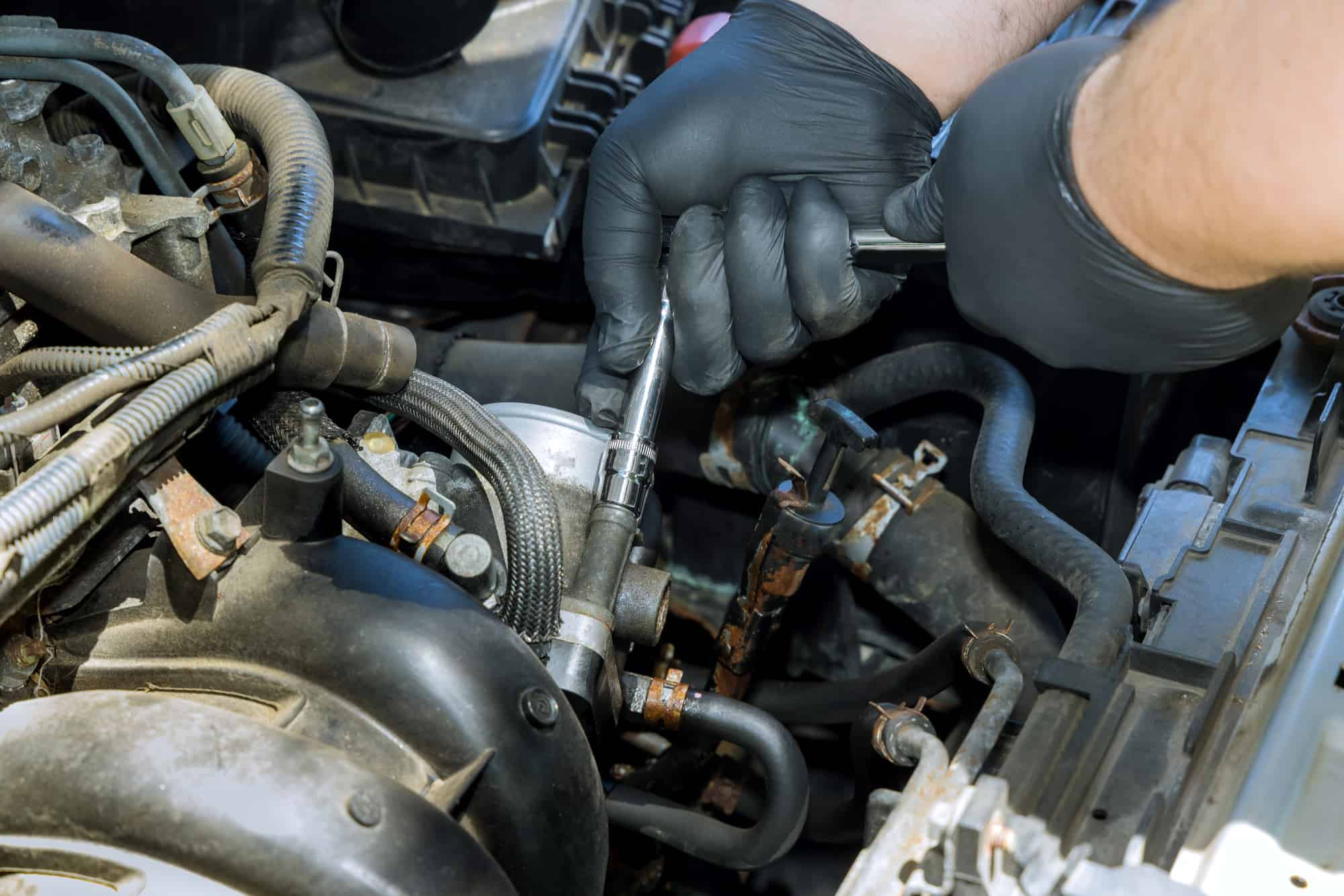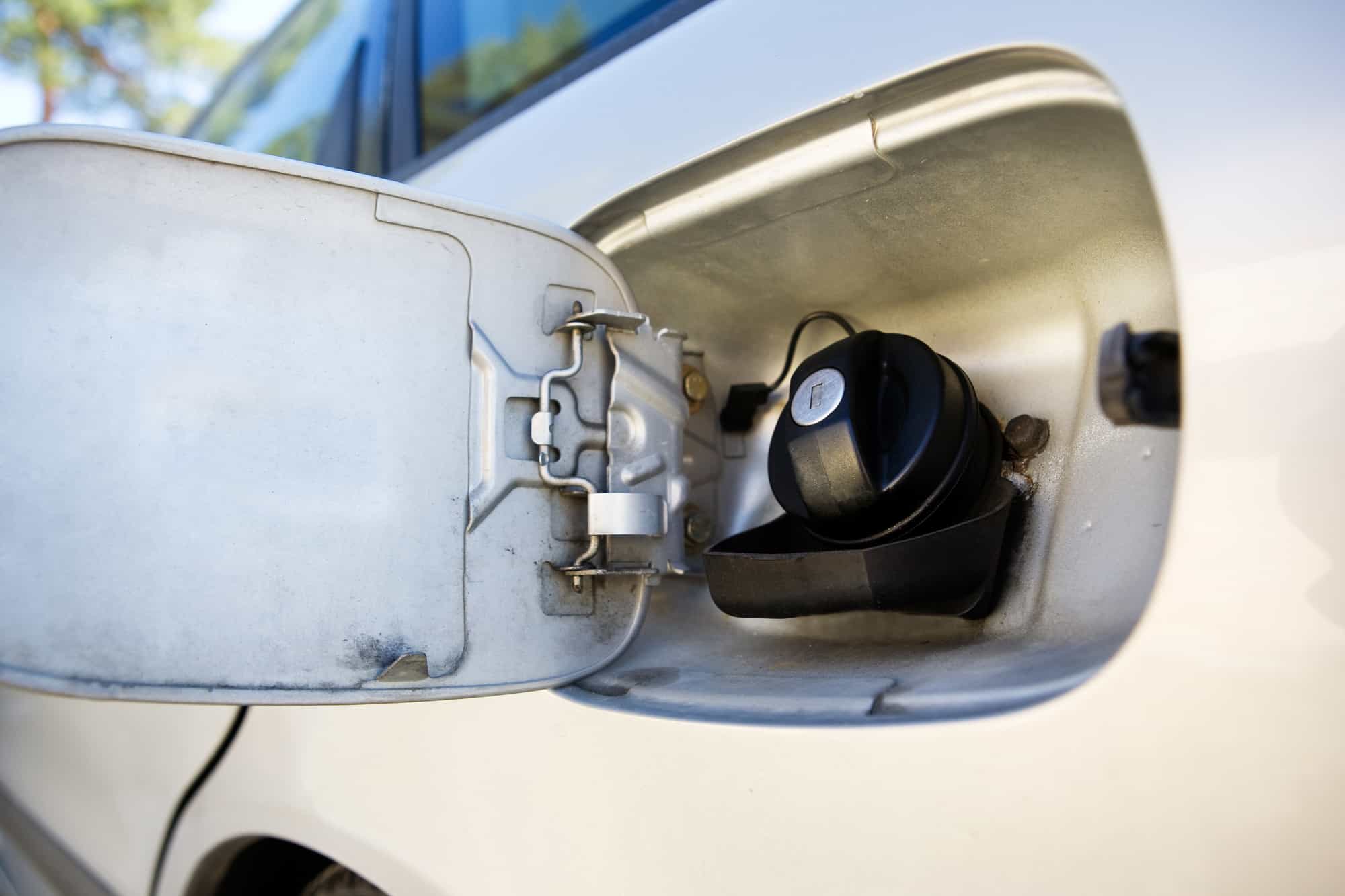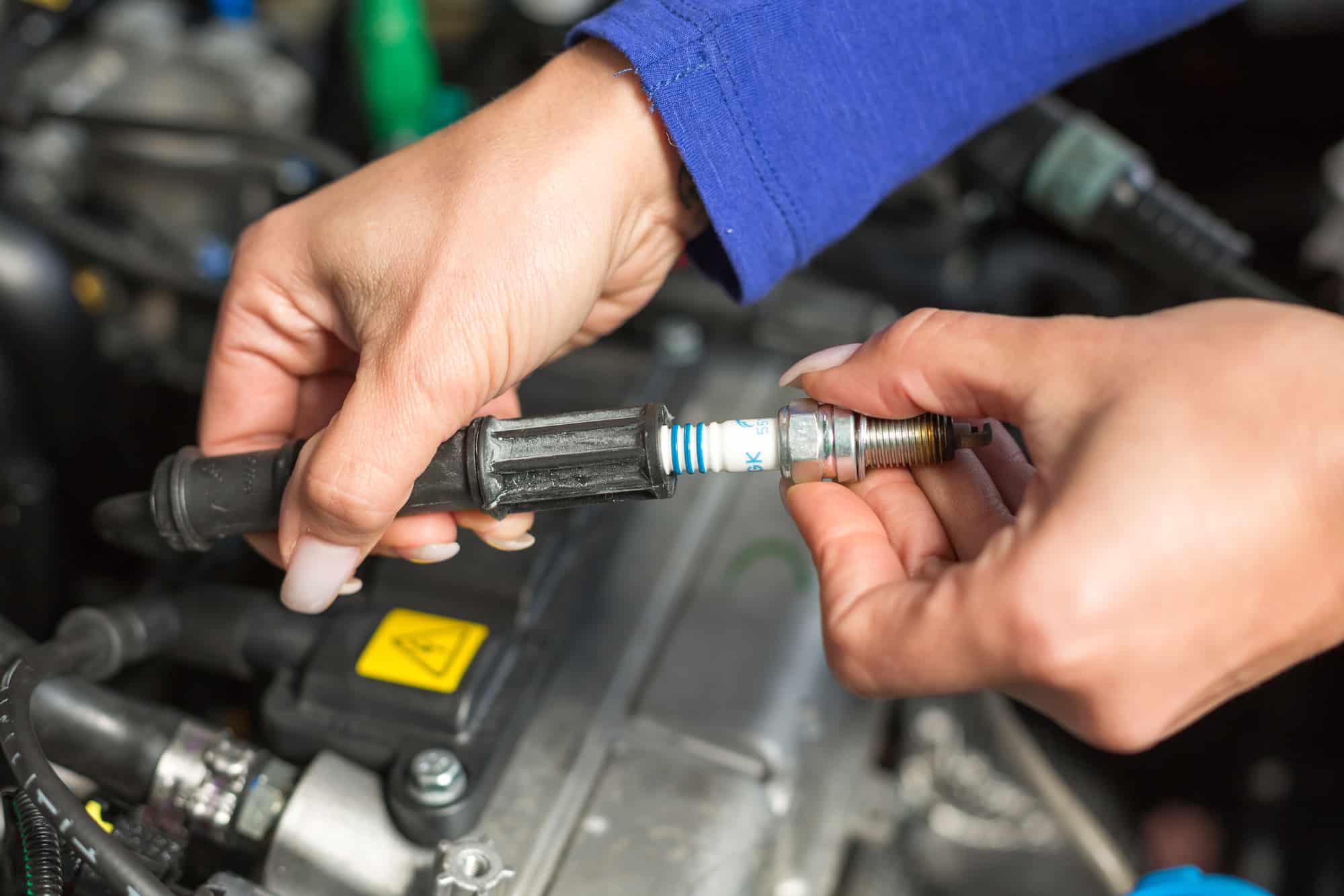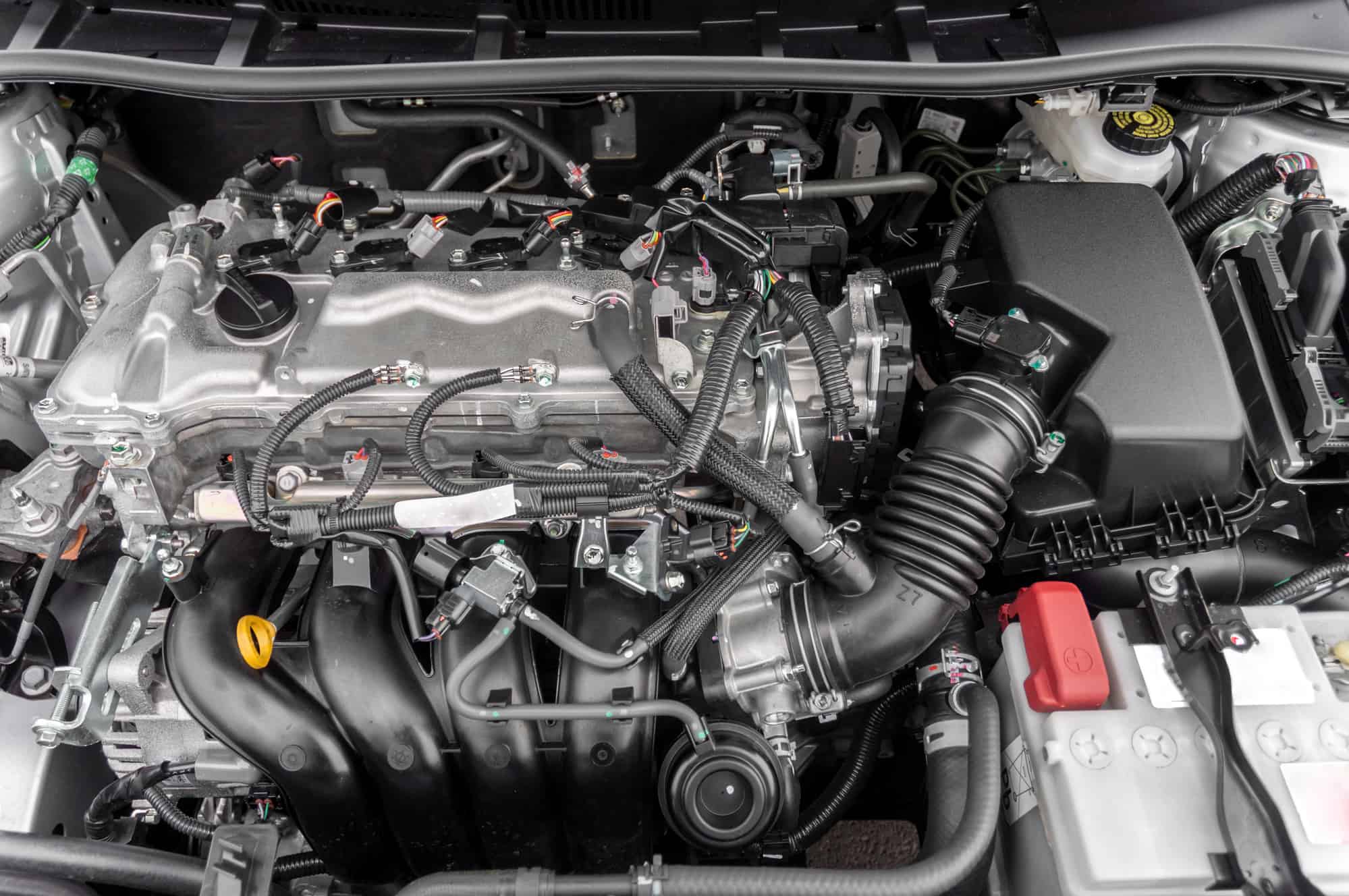What Does Engine Code P2138 Mean?
The P2138 error code is related to the throttle/pedal position sensor/switch “D”/”E” voltage correlation. When the ECU detects that the signals from the throttle position sensors do not correlate, it triggers the P2138 code.
The throttle/pedal position sensor/switch is responsible for providing the ECU with information about the position of the throttle or accelerator pedal. The ECU uses this information to regulate the engine’s performance.
If the signals from the two sensors do not match, it can cause a variety of issues such as reduced engine power, stalling, or even complete engine failure. Therefore, it is important to address the P2138 code as soon as possible to avoid further damage to the vehicle.
This code can be triggered by a variety of issues, from a defective throttle or pedal sensor to faulty wiring in the accelerator pedal.
How Serious Is Code P2138?
The P2138 error code is considered a serious issue as it can cause several problems with the vehicle’s performance, including reduced power, decreased fuel efficiency, and even stalling.
The vehicle may be stuck in “limp mode” or “reduced power mode,” which can make it difficult to drive.
Continuing to drive with the P2138 error code can also cause damage to other parts of the vehicle, leading to more expensive repairs in the future. It’s recommended to have the issue diagnosed and repaired as soon as possible.
What Causes P2138 Error Code?
When the engine control module ECU detects that the signals from the throttle position sensor and accelerator pedal position sensor do not correlate, it triggers the P2138 error code.
Here are some common causes of the P2138 error code:
Cause 1. Sensor/Switch Malfunction
One of the most common causes of the P2138 error code is a malfunctioning throttle/pedal position sensor or switch. When the sensor or switch malfunctions, it can send incorrect signals to the ECU, which can cause the P2138 error code to trigger.
Cause 2. Sensor/Switch Alignment Issues
Another common cause of the P2138 error code is sensor or switch alignment issues. If the sensors or switches are not properly aligned, they may not send the correct signals to the ECU, which can cause the P2138 error code to trigger.
Cause 3. Sensor/Switch Wiring Problems
Wiring problems can also cause the P2138 error code. If the wiring to the sensors or switches becomes damaged or disconnected, it can cause incorrect signals to be sent to the ECU or PCM, which can trigger the P2138 error code.
Cause 4. Sensor/Switch Circuit Malfunction
The circuit that connects the sensors or switches to the ECU or PCM can also malfunction. If the circuit is damaged or not functioning properly, it can cause inconsistent signals to be sent to the ECU or PCM, which can trigger the P2138 error code.
Cause 5. Environmental Factors
Environmental factors such as extreme temperatures or moisture can also cause the P2138 error code. If the sensors or switches are exposed to extreme temperatures or moisture, it can cause them to malfunction and send incorrect signals to the ECU or PCM, which can trigger the P2138 error code.
Cause 6. Faulty Engine Control Unit (ECU)
If the ECU or PCM is faulty, it can cause the P2138 error code. The ECU or PCM is responsible for receiving and interpreting the signals from the sensors or switches. If it is not functioning properly, it can cause incorrect signals to be sent to the ECU or PCM, which can trigger the P2138 error code.
Cause 7. Issues with the Throttle Body Assembly
Issues with the throttle body assembly can also cause the P2138 error code. If the throttle body assembly is damaged or not functioning properly, it can cause problems with voltage signals sent to the ECU or PCM, which can trigger the P2138 error code.
In summary, there are several possible causes of the P2138 error code, including sensor/switch malfunction, alignment issues, wiring problems, circuit malfunctions, environmental factors, faulty ECM, and issues with the throttle body assembly.
What Are The Symptoms of P2138 Error Code?
The symptoms of the P2138 error code may include the check engine light being on, loss or lack of power, the engine stalling when it stops, and the vehicle being stuck in “limp mode” or “reduced power mode”.
Here are some of the most common signs of P2138:
- Reduced Engine Power: One of the most noticeable symptoms of P2138 is a significant reduction in engine power. You may experience a lack of acceleration or difficulty maintaining speed.
- Stalling or Surging: The engine may exhibit irregular behavior such as stalling or surging. It may idle roughly or fluctuate in RPM (revolutions per minute) unexpectedly.
- Unresponsive Accelerator Pedal: When you press the accelerator pedal, there may be a delay or lack of response from the engine. It may feel as if the pedal is unresponsive or sluggish.
- Check Engine Light: P2138 triggers the check engine light (CEL) to illuminate on the vehicle’s dashboard. The CEL serves as a warning to indicate that there is a malfunction or issue within the engine control system.
- Reduced Throttle Response: You may notice a decrease in throttle response, meaning that the engine does not react as quickly or as forcefully to changes in throttle input. It may feel less responsive and less sensitive to accelerator pedal movements.
- Erratic or Inconsistent Idle: The engine idle speed may become erratic, fluctuating between high and low RPMs. It may also struggle to maintain a steady idle, resulting in a rough or unstable engine operation at idle.
- Limited Driving Modes: In some cases, the vehicle’s onboard computer system may activate a limited driving mode as a safety precaution. This mode is designed to protect the engine from potential damage and may restrict the vehicle’s speed and performance.
It’s important to note that while these symptoms are commonly associated with P2138, they can also be indicative of other related issues. Here are some other engine codes that are closely related to the P2138 error code:
- P2135: Throttle/Pedal Position Sensor/Switch A/B Voltage Correlation
- P2136: Throttle/Pedal Position Sensor/Switch A/B Voltage Correlation
- P2137: Throttle/Pedal Position Sensor/Switch B/C Voltage Correlation
- P2139: Throttle/Pedal Position Sensor/Switch D/E Voltage Correlation “B”
- P2140: Throttle/Pedal Position Sensor/Switch D/E Voltage Correlation “C”
To accurately diagnose the problem, it is recommended to use a professional diagnostic tool to retrieve the specific error code and consult with a qualified mechanic or dealership for proper diagnosis and repair.
How Does Throttle/Pedal Position Sensor Voltage Correlation Relate to TPS ‘A’ Circuit Range Performance Problem?
When the throttle/pedal position sensor voltage correlation does not align with the TPS ‘A’ circuit range performance requirements, it can trigger an OBDII trouble code explanation. This indicates a potential problem with the sensor’s ability to accurately measure and report the position of the throttle or pedal, impacting overall engine performance.
What Next – How To Diagnose And Fix Error Code P2138
The first step in diagnosing the P2138 code is to perform an initial inspection and diagnostic scan.
This involves checking the throttle/pedal position sensor/switch and the accelerator pedal position sensor for any signs of damage or wear.
You should then scan the vehicle’s ECU for any error codes and check for any other related issues.
Here are some of the general steps a mechanic would take to diagnose the cause of P2138:
1. Sensor/Switch Testing
After the initial inspection and scanning, a mechanic will perform sensor/switch testing. This involves testing the throttle/pedal position sensor/switch and the accelerator pedal position sensor to ensure they are functioning correctly. A voltmeter is normally used to check the voltage output of each sensor/switch.
2. Visual Inspection and Wiring Check
Next, the mechanic will perform a visual inspection and wiring check. This involves checking the wiring harness and connectors for any signs of damage or wear. The mechanic will also check for any loose or disconnected wires.
3. Using a Multimeter for Voltage Measurement
If the initial inspection and scanning, sensor/switch testing, and visual inspection and wiring check do not reveal any issues, the mechanic will use a multimeter for voltage measurement. This involves checking the voltage output of the throttle body assembly and the ECU to ensure they are functioning correctly.
4. Throttle Body Actuator Test
If the multimeter voltage measurement does not reveal any issues, the mechanic will perform a throttle body actuator test. This involves checking the throttle body assembly for any signs of damage or wear and testing the actuator to ensure it is functioning correctly.
5. ECU and Throttle Body Inspection
If the throttle body actuator test does not reveal any issues, the mechanic will perform an ECU and throttle body inspection. This involves checking the ECU and throttle body assembly for any signs of damage or wear and testing them to ensure they are functioning correctly.
If the diagnostic process reveals an issue with any of the components, the mechanic will recommend repair or replacement options. This may involve replacing the throttle/pedal position sensor/switch, accelerator pedal position sensor, throttle body assembly, or ECU.
How Much Does It Cost To Repair Error Code P2138?
The cost to repair OBD error code P2138 can vary depending on several factors, including the underlying cause of the issue, the vehicle make and model, the labor rates in your area, and whether you choose to address the problem yourself or seek professional assistance.
However, according to RepairSmith, the approximate cost for repairing the P2138 error code, including labor charges, is as follows:
- Accelerator pedal position sensor: $150 to $200
- Throttle position sensor: $180 to $250
- Throttle body actuator: $400 to $500
It’s important to note that these are approximate costs and the actual cost may vary depending on the specific circumstances
It’s important to remember that these cost estimates are general and can vary significantly depending on your location and the specific details of your vehicle and repair situation.
I’d strongly recommend you consult with a trusted mechanic or dealership for a more accurate estimate based on your circumstances.
As an Amazon Associate we earn from qualifying purchases.











I’ve been experiencing occasional surges in RPM and sometimes my car falls into “limp mode” while driving. Could these symptoms be related to the P2138 error code, even if my check engine light hasn’t come on yet?
I’ve been noticing my car sometimes loses power and the engine light has come on recently. Could my problem be related to the P2138 error code, and how can I confirm this before taking my car to a mechanic?